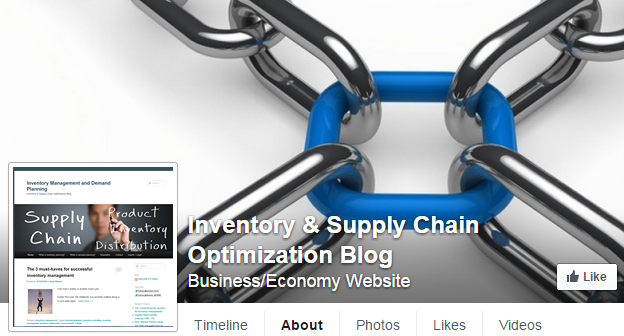
by Fronetics | Jan 19, 2015 | Blog, Supply Chain

The call for more transparent and more ethical supply chains
Events such as hurricane Sandy, the Fukushima nuclear disaster, the Bangladesh factory collapse, and the Ikea horse meat scandal, have positioned the spotlight on the supply chain and have consumers, regulators, and businesses calling for an increase in supply chain transparency.
The increased scrutiny of the supply chain is not a result of an increase in the number of events; rather it is a result of technology. The Internet of Things (IoT) is reducing the number of “black holes” within the supply chain and offering the capability of end-to end visibility – making the supply chain more transparent. The internet and social media is also increasing visibility and transparency. Tom Seal, head of research at Procurement Professionals, astutely points out that:
“The internet and social media leave almost no dark rocks for corporations to hide under.”
It is here that it is important to make the distinction between transparency and visibility. David Linich, Principal, Deloitte Consulting, does this well:
“Transparency goes beyond gaining visibility into the extended supply chain. It is the process by which a company takes action on the insights gained through greater visibility in order to manage risks more effectively.”
Environmental and ethical practices within the supply are areas where there is often a “disconnect between intentions and actions.” Seal:
“It’s far simpler to change branding and marketing – and present a company as environmentally and ethically aware – than it is to reconfigure or rebuild an entire global supply chain.”
That being said, companies who do use the insights gained through greater visibility and do take action can reap positive results. PepsiCo, for example, was able to identify energy-savings opportunities as a result of a carbon management and energy assessment program it undertook with its suppliers. The savings was not small – it totaled $60 million. However, savings are not always realized. It has been estimated, for example, that the cost of an iPhone could effectively double if it were manufactured in the United States, under stricter labor standards.
The question is, as companies strive to meet the demands for increased transparency, will a more ethical supply chain ultimately pay off for companies in the form of improved reputation as well as customer and employee loyalty?
Software Advice, a company that reviews supply chain management software, recently conducted a series of surveys with the objective of helping business owners and supply chain managers better understand consumer attitudes towards improving the ethics and environmental impact of the supply chain. The surveys found that, on average, consumers would pay for more for a product made by a company whose supply chain is ethical and has a reduced environmental footprint. For example, survey respondents indicated that they would pay as much as $27.60 more for a $100 product that was made by workers working in good conditions.
Does attitude equal behavior?
Ian Robinson of the University of Michigan and his team conducted an experiment at a suburban Detroit department store. The researchers placed identical socks side by side on display. Some socks were labeled as coming from factories with good working conditions. When priced the same, half of the customers chose the ethical socks. When the researchers increased the price of the ethical socks, the number of customers who chose ethical socks dropped to 33%. When the price of ethical socks increased to 20% or more than the regular socks the number of customers who chose the ethical socks dropped further – to 15%.
And why do consumers care?
Ahir Gopaldas of Fordham University’s business school conducted a study called “Marketplace Sentiments.” The objective of the study was to gain insight into why certain consumers are willing to spend more on “ethical products.”
The study defines marketplace sentiments as “collectively shared emotional dispositions toward marketplace elements.”
The study’s abstract explains that:
“From outrage at corporations to excitement about innovations, marketplace sentiments are powerful forces in consumer culture that transform markets. This article develops a preliminary theory of marketplace sentiments. Defined as collectively shared emotional dispositions, sentiments can be grouped into three function-based categories: contempt for villains, concern for victims, and celebration of heroes.”
Gopaldas notes that these sentiments are “critical to understanding how consumer culture works.” Specifically that:
“Contempt happens when ethical consumers feel anger and disgust toward the corporations and governments they consider responsible for environmental pollution and labor exploitation. Concern stems from a concern for the victims of rampant consumerism, including workers, animals, ecosystems, and future generations. Celebration occurs when ethical consumers experience joy from making responsible choices and hope from thinking about the collective impact of their individual choices.”
What does this mean for the supply chain?
The internet, social, media, and the IoT is making it less possible for companies to not only have skeletons in their closet, but also less possible for companies to have skeletons in general.
Consumers, regulators, and businesses are all calling for more transparent supply chains. Companies that listen, and who identify ways by which they can improve the ethics and environmental impact of their supply chain will be rewarded.

by Fronetics | Jan 19, 2015 | Blog, Supply Chain

The call for more transparent and more ethical supply chains
Events such as hurricane Sandy, the Fukushima nuclear disaster, the Bangladesh factory collapse, and the Ikea horse meat scandal, have positioned the spotlight on the supply chain and have consumers, regulators, and businesses calling for an increase in supply chain transparency.
The increased scrutiny of the supply chain is not a result of an increase in the number of events; rather it is a result of technology. The Internet of Things (IoT) is reducing the number of “black holes” within the supply chain and offering the capability of end-to end visibility – making the supply chain more transparent. The internet and social media is also increasing visibility and transparency. Tom Seal, head of research at Procurement Professionals, astutely points out that:
“The internet and social media leave almost no dark rocks for corporations to hide under.”
It is here that it is important to make the distinction between transparency and visibility. David Linich, Principal, Deloitte Consulting, does this well:
“Transparency goes beyond gaining visibility into the extended supply chain. It is the process by which a company takes action on the insights gained through greater visibility in order to manage risks more effectively.”
Environmental and ethical practices within the supply are areas where there is often a “disconnect between intentions and actions.” Seal:
“It’s far simpler to change branding and marketing – and present a company as environmentally and ethically aware – than it is to reconfigure or rebuild an entire global supply chain.”
That being said, companies who do use the insights gained through greater visibility and do take action can reap positive results. PepsiCo, for example, was able to identify energy-savings opportunities as a result of a carbon management and energy assessment program it undertook with its suppliers. The savings was not small – it totaled $60 million. However, savings are not always realized. It has been estimated, for example, that the cost of an iPhone could effectively double if it were manufactured in the United States, under stricter labor standards.
The question is, as companies strive to meet the demands for increased transparency, will a more ethical supply chain ultimately pay off for companies in the form of improved reputation as well as customer and employee loyalty?
Software Advice, a company that reviews supply chain management software, recently conducted a series of surveys with the objective of helping business owners and supply chain managers better understand consumer attitudes towards improving the ethics and environmental impact of the supply chain. The surveys found that, on average, consumers would pay for more for a product made by a company whose supply chain is ethical and has a reduced environmental footprint. For example, survey respondents indicated that they would pay as much as $27.60 more for a $100 product that was made by workers working in good conditions.
Does attitude equal behavior?
Ian Robinson of the University of Michigan and his team conducted an experiment at a suburban Detroit department store. The researchers placed identical socks side by side on display. Some socks were labeled as coming from factories with good working conditions. When priced the same, half of the customers chose the ethical socks. When the researchers increased the price of the ethical socks, the number of customers who chose ethical socks dropped to 33%. When the price of ethical socks increased to 20% or more than the regular socks the number of customers who chose the ethical socks dropped further – to 15%.
And why do consumers care?
Ahir Gopaldas of Fordham University’s business school conducted a study called “Marketplace Sentiments.” The objective of the study was to gain insight into why certain consumers are willing to spend more on “ethical products.”
The study defines marketplace sentiments as “collectively shared emotional dispositions toward marketplace elements.”
The study’s abstract explains that:
“From outrage at corporations to excitement about innovations, marketplace sentiments are powerful forces in consumer culture that transform markets. This article develops a preliminary theory of marketplace sentiments. Defined as collectively shared emotional dispositions, sentiments can be grouped into three function-based categories: contempt for villains, concern for victims, and celebration of heroes.”
Gopaldas notes that these sentiments are “critical to understanding how consumer culture works.” Specifically that:
“Contempt happens when ethical consumers feel anger and disgust toward the corporations and governments they consider responsible for environmental pollution and labor exploitation. Concern stems from a concern for the victims of rampant consumerism, including workers, animals, ecosystems, and future generations. Celebration occurs when ethical consumers experience joy from making responsible choices and hope from thinking about the collective impact of their individual choices.”
What does this mean for the supply chain?
The internet, social, media, and the IoT is making it less possible for companies to not only have skeletons in their closet, but also less possible for companies to have skeletons in general.
Consumers, regulators, and businesses are all calling for more transparent supply chains. Companies that listen, and who identify ways by which they can improve the ethics and environmental impact of their supply chain will be rewarded.

by Fronetics | Jan 13, 2015 | Blog, Logistics, Marketing, Social Media, Strategy, Supply Chain
In December 2014 Fronetics Strategic Advisors conducted a survey to learn the favorite social media accounts of the logistics and supply chain industries.
Here are the Facebook accounts which survey respondents identified as favorites:
Cerasis is a top North American third party logistics company offering logistics solutions with a strong focus on LTL freight management.

The Supply Chain Blog covers the top trends surrounding the topics of inventory and supply chain optimization. It also provides a weekly news summary for the supply chain industry.

Transplace is a non-asset, North American based third party logistics provider offering manufacturers, retailers and consumer packaged goods companies the optimal blend of logistics technology and transportation management services.


by Fronetics | Jan 13, 2015 | Blog, Logistics, Marketing, Social Media, Strategy, Supply Chain
In December 2014 Fronetics Strategic Advisors conducted a survey to learn the favorite social media accounts of the logistics and supply chain industries.
Here are the Facebook accounts which survey respondents identified as favorites:
Cerasis is a top North American third party logistics company offering logistics solutions with a strong focus on LTL freight management.

The Supply Chain Blog covers the top trends surrounding the topics of inventory and supply chain optimization. It also provides a weekly news summary for the supply chain industry.

Transplace is a non-asset, North American based third party logistics provider offering manufacturers, retailers and consumer packaged goods companies the optimal blend of logistics technology and transportation management services.


by Fronetics | Jan 8, 2015 | Blog, Leadership, Logistics, Strategy, Supply Chain
Social media is driving a business revolution. Companies within the logistics and supply chain industries are beginning to take part in the revolution. Companies within the logistics and supply chain industry are adopting social media as a business strategy – and reaping positive results.
In December 2014 Fronetics Strategic Advisors conducted a survey to learn which industry blog is your favorite. The results are in.
The number one blog within the logistics and supply chain industries is: Cerasis

As a third party logistics company, the Cerasis mission is to decrease freight management inefficiencies and to provide maximum hard and soft cost savings for our customers in the process of shipping LTL (less than truckload) or truckload freight and small package freight by providing logistics solutions through our powerful and proprietary web-based proprietary transportation management system, the Cerasis Rater, and integrated managed transportation services.
The Cerasis blog is a wealth of information for those within the supply chain and logistics industries. The blog covers industry trends, educates, explains rules and regulations, busts myths, and has awesome infographics.
Other valued industry blogs include:





